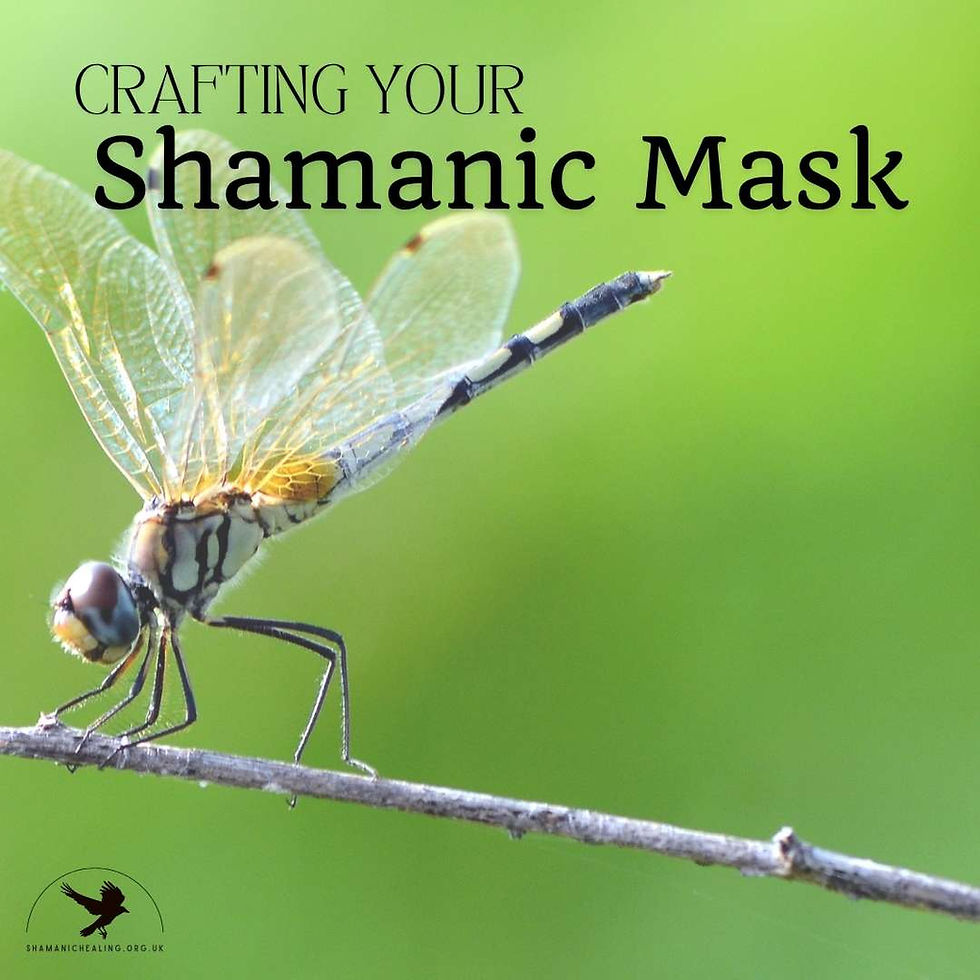How to choose a Shamanic teacher?
- Ioan Fazey
- Feb 14, 2024
- 5 min read
Updated: Feb 25, 2025
There are more and more opportunities to learn Shamanic practice, but it can be difficult to decide which teacher will be best for you. This article explains what to look for, and some steps to work through to help you find a teacher that will be right for you.
What to look for in a Shamanic teacher
Here are some things to consider when looking for a Shamanic practice teacher.

Experience
Perhaps the best criteria for choosing a teacher is the extent of experience that they may have. This could be in Shamanic practice, as a teacher more generally, and/or as a teacher of Shamanic practice more specifically. As interest in Shamanic practice grew in the West in the 1970s and 1980s, many of the first-generation western teachers had spent considerable time learning from traditional Shamanic peoples. Over time, however, second and even third generations of western teachers have emerged. These later generations may not have had as much exposure to Shamanic cultures, but this does not necessarily mean they are not experienced in more contemporary forms of Shamanic practice and healing. Many western teachers may even have greater experience of teaching, such as from their former professional lives, and are thus better able to accommodate and deliver training in contemporary western settings. In addition to the length and of extent and practical and teaching experience, the hallmark of a good teacher can be whether they themselves learned from a very experienced teacher or teachers. So don’t be afraid to ask a potential teacher about the nature and extent of their experience, and where, how and from whom they gained this from.
Adherence to a strong code of ethics
A good Shamanic teacher will have a strong code of ethics that they carefully adhere to in the way that they work and in how they will guide you on your learning journey. They will view your training as a sacred and spiritual process. Many will be approachable and amenable, and they should make you feel safe and cared for. But being ethical doesn’t always mean they will be approachable all the time. Shamanic practice often involves a deep transformational change, which can be difficult, and with different people reacting to this in diverse ways. Shamanic teachers must therefore sometimes enforce clear boundaries and ensure continued focus on holding a safe and sacred energetic space. So do look for teachers that you feel you can easily relate to, that will care for you. But you also want someone who is also able to maintain clear boundaries.
An experiential approach to teaching
Shamanic practice is inherently a process of personal and spiritual development. Just like riding a bike, you can’t learn about Shamanic practice by reading a book or watching a power point presentation. You must get on the proverbial Shamanic bike and give it a go. So, it is important that you get a sense of what you teacher’s pedagogy and approach to helping you learn is. The best teachers will make sure their courses have lots of opportunities to learn by doing through diverse activities and for you to share your experience with other participants so you can make sense of experiences. Shamanic courses can also be intense, so you may want to make sure that a teacher is not trying to pack too many things in at once and are comfortable with giving you time and space to integrate what you learn. In short, look for a teacher who avoids long monologues, focuses on learning by doing, provides a well spaced-out programme, with lots of practical activity, where you will be able to engage with your learning peers.
Ability to provide a transitional safe space
Learning Shamanic practice is not like studying a normal academic course. It goes well beyond the kinds of learning you get from books and usually involves some kind of change process. This can come by shifting your relationship to the world, such as through opening you up to other forms of perception and ways of knowing. Change can also be stimulated through being involved in deep forms of energetic healing. Both these processes of change take your mind and body time to integrate and make sense of. In many ways, Shamanic practitioner training courses then need to be viewed as a process of transition, and an experienced teacher will recognize this and design the course accordingly. They will provide both a physical and social safe space for this transition to occur. They will also make sure a course has enough time for the transition to play out, such as by having a period of landing, deeper work, and time to bring the process to an appropriate close. While experienced teachers cannot fully control who participates, they will not be afraid to challenge participants if a disruption should arise.
Authentic exchange
Most Shamanic teachers rely on income from their courses to sustain their livelihoods and, at least in the West, this income is essential for them to continue to offer training. Appropriate venues for delivering courses are also very hard to come by, and can be expensive, with considerable upfront risk being taken by a teacher when they set up a course. It also takes a lot of experience to run a course well. So do expect you will need to make an appropriate exchange. The amount will vary greatly depending on the teacher, and there is little guidance I can give here on what to expect. But authentic teachers will normally be transparent about their teaching fee separately from other costs, such as food, venue and accommodation.
Continued practice and focus of concern.
A good teacher will clearly be engaged in regular practice and their own spiritual development. They will also be fully committed to a group of participants when they are working with them, making them their sole concern. Most teachers will make sure they create a dedicated space and time before and after teaching a course so they can prepare and be their best selves energetically and be able to hold the space for others to learn and transition. For me, this also extends to within the time of a course, where I make sure I am fully committed to course participants, and refrain from engaging in any other activities, such as when we break for the night. So, look for a teacher that you feel will give themselves to you fully during the period of your course.
Steps to choosing the right teacher for you
Now that you have a sense of what to look for in a teacher, how should you go about looking for one? The vast majority of people choose a teacher because someone has already recommended them. But if you are starting out and don’t have a recommendation, then here are five useful steps you can follow.
Find a few different teachers online. Which of these do you get a good feeling from? Are you drawn to their picture? In therapeutic counselling, most clients initially choose a practitioner by asking themselves how well they relate to their picture. So don’t be afraid to start with who you are intuitively and initially drawn to.
Explore the information available online, paying particular attention to their extent and level of experience. Do you get the sense that they are experienced and offer what you think you need?
Approach the potential teacher and ask them about some of the things mentioned in this article, such as their approach to teaching and their ethical code.
Ask for a referral from a former student, perhaps even someone you can talk to, who has joined one of their courses.
Finally, the best way to check out a teacher is to give it a go. Book on an introductory course led by someone you are drawn to, and see how you get on.
For more information, see also the articles on:



Comments